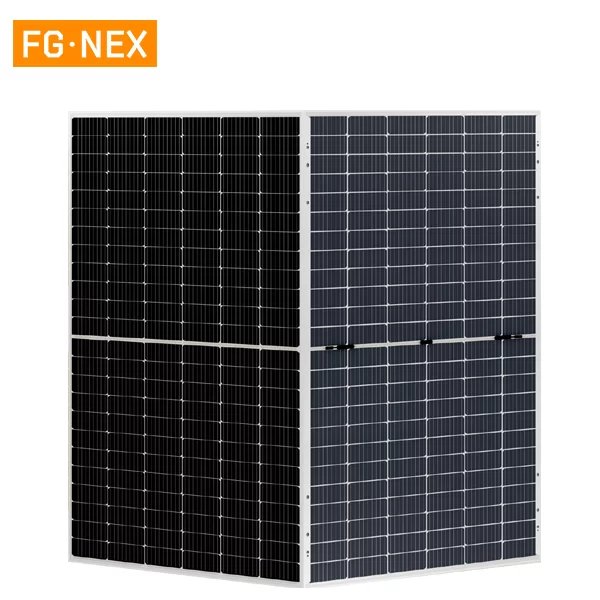Which is better, monocrystalline solar panels or polycrystalline silicon solar panels?
3 min readAs the demand for renewable energy continues to grow, solar energy is gaining more and more attention as a clean, endless form of energy. Among many solar panels, monocrystalline and polycrystalline silicon panels have become the leading products in the market due to their high energy conversion efficiency and mature technology. This article will delve into the differences between monocrystalline and polycrystalline silicon solar panels in key aspects such as efficiency, stability, and cost, helping consumers and industry professionals better understand which technology is superior.
So which one is better, monocrystalline solar panels or polycrystalline silicon solar panels? Really, it depends on your requirements for the solar panels, but in our experience, monocrystalline solar panels are better as they have a higher efficiency range and better power capacity.
Monocrystalline solar panels:
Monocrystalline solar panels are made from individual crystalline silicon wafers, which are obtained by cutting silicon ingots. Due to the complete and consistent crystal structure, the electrons in the monocrystalline silicon panels can move more freely, thereby reducing the loss of electrical energy and improving the overall efficiency of the solar cell.
Polycrystalline silicon solar panels:
Polycrystalline silicon panels use multiple small silicon ingots with random crystal structure directions. They are generally cheaper than monocrystalline silicon but are slightly less efficient because the random crystal structure causes increased resistance to electron movement.
Energy efficiency comparison
Monocrystalline solar panels have higher conversion efficiency than polycrystalline silicon. This means that under the same lighting conditions, monocrystalline solar panels can produce more electricity. However, technological advances have narrowed the efficiency gap between the two.

Stability and weather resistance
Monocrystalline silicon has better stability and is less sensitive to temperature changes. Therefore, it performs better in hot or large temperature difference environments. Polysilicon panels may experience efficiency degradation over time due to their physical properties.
Cost analysis
The production process of polysilicon is relatively simple and the raw material utilization rate is high, so the cost is low. However, with the advancement of monocrystalline manufacturing technology and large-scale production, the cost of monocrystalline silicon is gradually decreasing.
Life span
Monocrystalline silicon panels generally have a longer life, up to 25 years or more. Although polycrystalline silicon has a low initial cost, its overall life cycle is slightly shorter than that of monocrystalline silicon, possibly due to reduced efficiency and other factors.
Environmental impact
From an environmental perspective, both monocrystalline and polycrystalline silicon use significant amounts of energy during production, but given the higher efficiency and potentially longer lifespan of monocrystalline solar panels, their overall environmental footprint is likely to be relatively small.
Application scope
Monocrystalline solar panels are suitable for scenarios where space is limited but a high-efficiency solution is required, such as rooftop installations. Polycrystalline silicon panels are suitable for large-scale ground installation, where cost-effectiveness is the main consideration.
Market trend
Although polycrystalline silicon once dominated the market, the rapid development of monocrystalline silicon in recent years has caused its market share to continue to increase. Many industry experts predict that monocrystalline silicon will become mainstream in the future.
Technological Innovation and Prospects
Currently, both monocrystalline and polycrystalline silicon technologies are constantly improving, including the application of technologies such as PERC (passive emission and rear contact) and heterojunction, which are driving further improvements in efficiency.
Choosing monocrystalline or polycrystalline solar panels depends on a variety of factors, including budget, installation environment, efficiency requirements, and personal preference. Despite the efficiency and stability advantages of monocrystalline silicon, polycrystalline silicon remains an affordable option, especially for projects with limited budgets. However, as technology advances and costs fall, monocrystalline silicon is quickly becoming a more attractive option. Ultimately, an individual or business should make a choice based on their own needs and resources, taking into account long-term sustainability and environmental impact.
mia
charles@fgnexsolar.com
